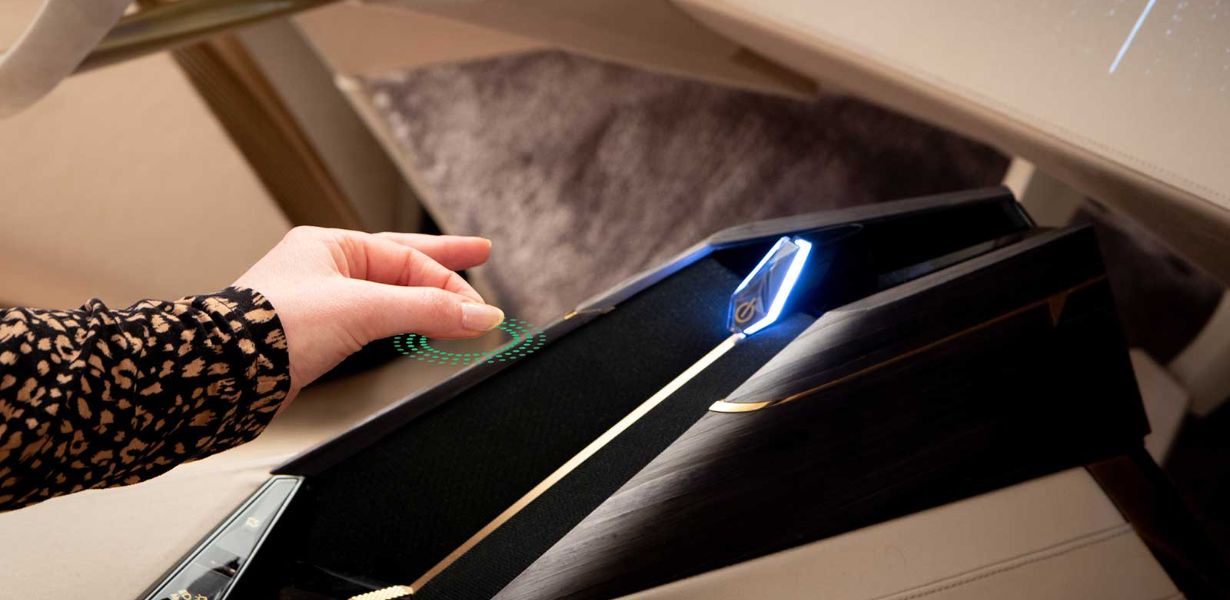
Gesture-Based UI Design: A Leap Towards Intuitive Interaction
- Post
- August 7, 2023
- UI Design, UI/UX Design, Web Design
- 0 Comments
In a world where digital interfaces are omnipresent, navigating and interacting seamlessly has become paramount. Traditional button-driven interfaces have long been the norm, but gesture-based UI design presents a captivating departure from this convention. By allowing users to engage with technology using natural movements, gestures bridge the gap between the physical and the digital, resulting in a more intuitive and engaging user experience.
Understanding Gestures: The Building Blocks
Gestures, in the context of UI design, are defined as specific hand or body movements that trigger an action or response within a digital interface. These gestures mimic real-world actions, making them inherently intuitive. They include swipes, pinches, taps, rotations, and more. Such interactions are highly context-sensitive, providing users with a sense of direct manipulation over the digital content.
The Benefits of Gesture-Based UI Design
Enhanced User Engagement:
Gesture-based interactions facilitate a deeper connection between users and devices, as they replicate real-world actions, creating a more immersive experience.
Intuitiveness:
The natural nature of gestures makes interactions more intuitive, reducing the learning curve for users and enabling effortless navigation.
Accessibility:
Gesture-based interactions can be especially advantageous for users with disabilities, offering alternative methods of engagement.
Visual Minimalism:
These interactions often eliminate the need for excessive buttons and controls, promoting a cleaner, more visually appealing design
Tools Empowering Gesture-Based UI Design
Framer:
This powerful tool enables designers to create interactive prototypes with intricate gesture-based interactions, allowing for a dynamic user experience.
Adobe XD:
Known for its versatility, Adobe XD offers an array of features to implement and test gesture-based interactions seamlessly.
Proto.io:
Ideal for rapid prototyping, Proto.io empowers designers to bring gesture-based ideas to life quickly, streamlining the design process.
Templates for Effortless Gesture Integration
Navigation Gestures:
Replace conventional navigation bars with swipes and taps for a more fluid and immersive browsing experience.
Image Manipulation:
Integrate pinch-to-zoom and rotate gestures to empower users to interact with images in a more tactile manner.
Content Organization:
Use swipe gestures to navigate between sections or cards, enhancing content discoverability.
The Future Landscape
Gesture-based UI design is poised to shape the future of digital interaction. As technology advances and user expectations evolve, designers must harness the potential of gestures to create intuitive, engaging interfaces. From augmented reality to wearable tech, the applications of gesture-based design are boundless, promising a more harmonious coexistence between humans and technology.
Final Words
In a world where intuitive interaction is a priority, gesture-based UI design has emerged as a transformative force. By seamlessly integrating natural gestures into digital interfaces, designers unlock unprecedented levels of engagement, accessibility, and visual elegance. As we look ahead, the convergence of innovation and usability continues to pave the way for a more intuitive digital landscape.
Commonly Asked Questions
Q1: Are gesture-based interfaces suitable for all types of applications?
A1: While gesture-based interfaces offer intuitive interaction, their suitability depends on the context. They excel in applications that require fluid navigation and engagement, such as mobile apps and touch-based devices.
Q2: How can designers ensure gestures are user-friendly?
A2: Designers should conduct thorough usability testing to ensure gestures are intuitive and user-friendly. This involves observing real users’ interactions and refining the gestures based on their feedback.
Q3: What challenges do designers face with gesture-based UI?
A3: Designing for gesture-based interactions requires careful consideration of diverse user behaviors and potential usability issues. Balancing novelty with usability can be a challenge.
Q4: Can gestures replace traditional buttons entirely?
A4: While gestures offer an innovative approach, complete replacement of traditional buttons might not be suitable for all interfaces. A balanced approach that considers user habits and preferences is crucial.
Q5: How can developers optimize gesture responsiveness?
A5: Developers can optimize gesture responsiveness by fine-tuning touch sensitivity and implementing gesture recognition algorithms that differentiate intentional gestures from accidental touches.



